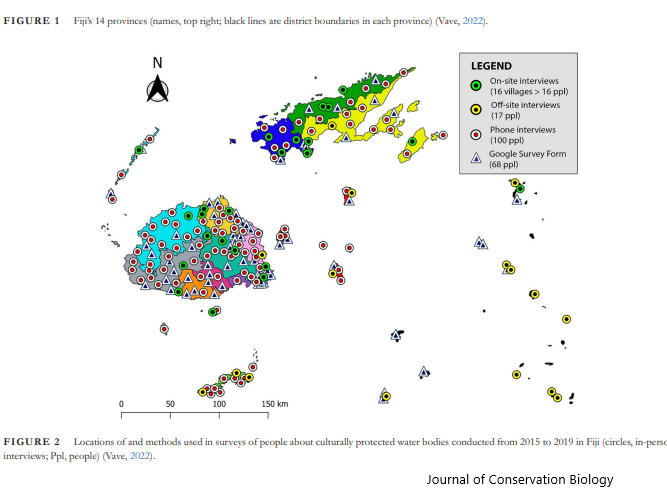
Globally, protected areas associated with sacred sites and cemeteries are an emerging area of research. However, they are biased toward terrestrial systems. In Fiji, funerary protected areas (FPAs) in freshwater and marine systems are culturally protected by Indigenous Fijians following the burial of a loved one on clan land. First documented in the 1800s, FPAs in Fiji have not been researched despite more than 30 years of conservation efforts and countrywide co-management of natural resources. We sought to bridge this knowledge gap by elucidating 8 socioecological attributes of Indigenous FPAs through stratified, purposive, semi structured interviews of 201 key informants across Fiji's 189 districts. Seventy-three districts actively implemented FPAs; another 34 were not being implemented because of low FPA awareness, FPA exclusion from co-management plans, and conflicts in chief selection. Thirty-three percent of districts established FPAs for chiefs only, and 20% established FPAs for any clan member, resulting in the establishment of numerous FPAs annually. From the 1960s to 2019, 188 FPAs were established. Forty-four percent of FPAs were protected for 100 nights, and 47% protected all resources and associated ecosystems in the FPA. Only 25% of districts harvested edible fish and invertebrates; another 22% harvested edible fish only. For some chiefs’ funeral rites, only turtles were harvested, which are protected by law, thereby requiring government exemption for traditional use. The FPA harvest provisions varied from engaging whole communities to engaging specific clans, such as traditional fishers or those who performed the burial. Our results showed that practices associated with FPAs in Fiji are diverse, organically evolving, and more socially nuanced and complex than the fisheries and food provisioning focus they are known for. Erosion of Indigenous knowledge and practices associated with FPAs and FPA exclusion from conservation planning will negatively affect social and ecological resilience, resulting in vulnerable communities.














